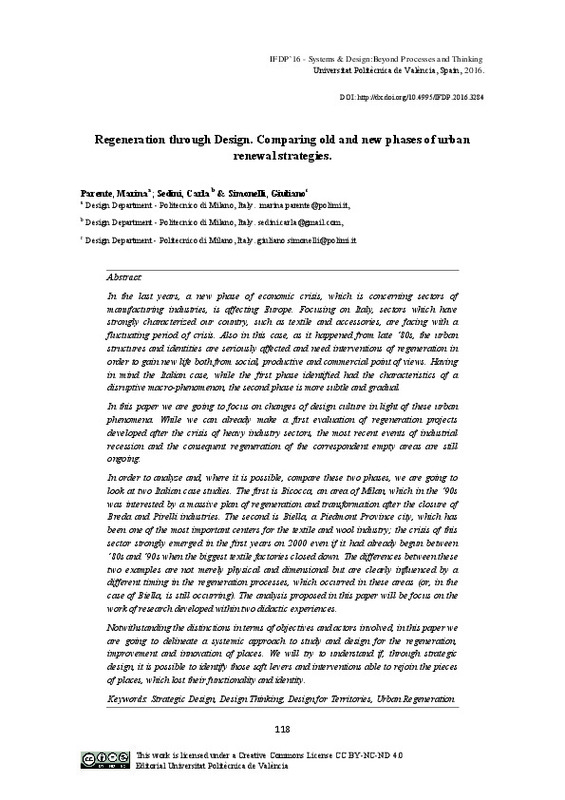JavaScript is disabled for your browser. Some features of this site may not work without it.
Buscar en RiuNet
Listar
Mi cuenta
Estadísticas
Ayuda RiuNet
Admin. UPV
Regeneration through Design. Comparing old and new phases of urban renewal strategies
Mostrar el registro completo del ítem
Parente, M.; Sedini, C.; Simonelli, G. (2016). Regeneration through Design. Comparing old and new phases of urban renewal strategies. En Systems&design:beyond processes and thinking. Editorial Universitat Politècnica de València. 118-132. https://doi.org/10.4995/IFDP.2015.3284
Por favor, use este identificador para citar o enlazar este ítem: http://hdl.handle.net/10251/87597
Ficheros en el ítem
Metadatos del ítem
| Título: | Regeneration through Design. Comparing old and new phases of urban renewal strategies | |
| Autor: | Parente, Marina Sedini, Carla Simonelli, Giuliano | |
| Fecha difusión: |
|
|
| Resumen: |
[EN] In the last years, a new phase of economic crisis, which is concerning sectors of
manufacturing industries, is affecting Europe. Focusing on Italy, sectors which have
strongly characterized our country, such as ...[+]
|
|
| Palabras clave: |
|
|
| Derechos de uso: | Reconocimiento - No comercial - Sin obra derivada (by-nc-nd) | |
| ISBN: |
|
|
| Fuente: |
|
|
| DOI: |
|
|
| Editorial: |
|
|
| Versión del editor: | http://ocs.editorial.upv.es/index.php/IFDP/IFDP/paper/view/3284 | |
| Título del congreso: |
|
|
| Lugar del congreso: |
|
|
| Fecha congreso: |
|
|
| Tipo: |
|








